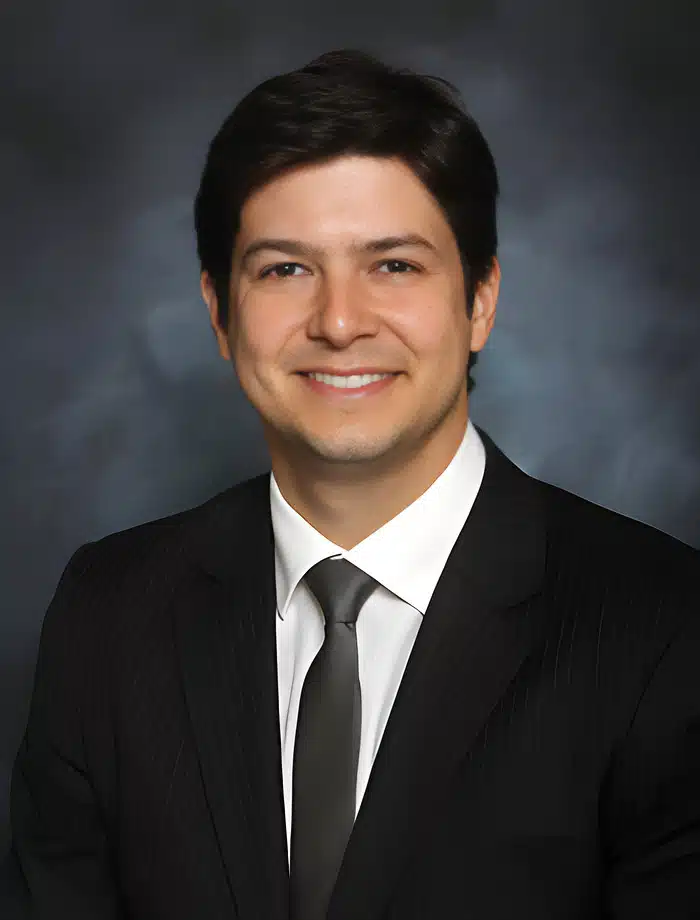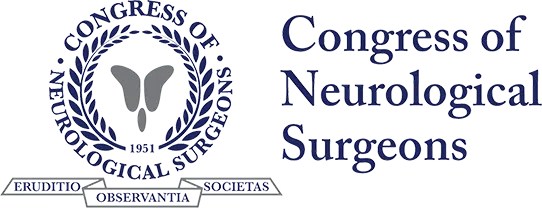Key Advantages of Lumbar Artificial Disc Replacement
Embrace mobility and minimal downtime with lumbar artificial disc replacement under Dr. Alex Taghva’s skilled care, offering a cutting-edge remedy for lower back pain that honors your body’s natural mechanics.
"*" indicates required fields
The goal of lumbar ADR is to allow patients to maintain flexibility while reducing pain caused by spinal compression. This minimally invasive procedure can be particularly beneficial for those who have not responded well to traditional treatments such as physical therapy, medications, and rest. Patients often find that their mobility and quality of life are improved due to ADR’s ability to reduce inflammation and restore the full range of motion.
Evaluating Suitability: Is Lumbar ADR Right for Me?
You should decide whether to have a lumbar ADR under careful consultation with your doctor or neurosurgeon. Depending on your medical history and particular condition, you may not be eligible for this procedure. However, if you suffer from chronic lower back pain that has not been successfully treated with other methods, lumbar ADR may be an appropriate solution.
If you are considering lumbar ADR, you should discuss the risks and benefits of the procedure with your doctor. They will give advice as to whether it is right for you and how it can improve your quality of life.
Call today to schedule your consultation
Causes of Degenerative Disc Disease (DDD)
Natural Aging Process
Aging is a natural process that can take its toll on the body over time. As we age, our bodies naturally experience wear and tear, which can lead to the development of degenerative disc disease (DDD) in the spine. In particular, the discs that are located in the cervical spine (neck) are especially vulnerable to this condition.
Overall, aging is one of several potential causes of DDD. You should consult with your doctor if you believe you may be suffering from this condition to determine the best course of action for treating your symptoms.

Spinal Trauma or Injury
Injury or trauma to the spine can be a major cause of degenerative disc disease (DDD). Injury to the spinal column can result in damage to adjacent levels, which can cause further damage to the diseased disc. The pressure from the injury may also compress and irritate spinal nerves, leading to increased inflammation and pain levels. Those who have experienced significant trauma or injury should seek medical attention right away to receive an accurate diagnosis and treatment plan.
The process of diagnosing DDD typically involves your doctor conducting a physical exam. During this exam, the doctor will assess your posture and range of motion, as well as any other signs or symptoms you may be experiencing. The doctor may also use imaging tests such as X-ray or MRI to better examine the damaged disc(s) and surrounding structures. Following this assessment, your doctor will suggest an appropriate course of action for treating your condition.

Genetic Predisposition and Other Health Conditions
Genetics, as well as other underlying health conditions, can contribute to the development of degenerative disc disease (DDD). Genetics plays a role in determining the amount of natural motion that your spinal discs possess. When this motion is reduced due to genetics or other causes, it can lead to increased wear and tear on the discs, which may cause them to become damaged over time.
Additionally, certain underlying health conditions such as osteoporosis and diabetes can increase the risk of developing DDD by weakening the spine and affecting its ability to naturally repair the damage. For treating DDD, spinal surgery such as lumbar ADR may be an appropriate option for those who are suffering from chronic pain due to their condition. This procedure replaces worn-out or damaged discs with artificial ones to restore natural motion and reduce pain.
While this surgical option comes with some risks, it can often provide significant pain relief for those struggling with DDD. However, you should consult your doctor before making any decisions regarding your treatment plan to determine if surgery is right for you.
Testimonials
Diagnosing DDD and Indicators for ADR Surgery
Depending on the severity of the condition, indicators for ADR surgery can range from persistent pain in the affected area to difficulty performing certain activities due to stiffness or mobility issues. Additionally, your doctor can use imaging tests such as X-rays or MRI to confirm a diagnosis of DDD, taking a closer look at the spinal level to identify any disc herniation or other abnormalities.
In some cases, the doctor may recommend spinal fusion surgeries for those suffering from DDD to reduce pain and increase mobility. This option involves fusing two adjacent discs to prevent them from slipping or causing further damage to the spine. However, not all cases of DDD require surgical intervention, and other treatment options may be more suitable for those with milder symptoms, such as physical therapy or anti-inflammatory medications.

Exploring Conservative Treatments Before Considering Surgery
The doctor may use a number of conservative treatments prior to considering surgery. Pain medications such as non-steroidal anti-inflammatory drugs (NSAIDs) and muscle relaxants can help reduce pain and improve mobility, while physical therapy exercises can strengthen the muscles surrounding the spine and restore natural motion. Additionally, clinical studies have shown that epidural injections with corticosteroids can provide short-term relief for some patients suffering from DDD.
While these treatments can sometimes help reduce pain and restore normal motion, they may not always be able to address more severe cases of DDD. In these cases, the doctor may recommend lumbar ADR surgery as a safe procedure for restoring the intervertebral discs and reducing chronic pain. Before undergoing this type of surgical intervention, patients should consult their doctor to determine if surgery is right for them.
Are you ready to meet a leading Orange County Neurosurgeon?
Identifying Risks and Potential Complications of Lumbar ADR Surgery

While the complication rate is typically low, patients should be aware of potential risks to make an informed decision regarding their treatment plan. Potential risks include infection, nerve damage, and failure of the artificial discs due to a faulty design or poor implantation technique. Additionally, there may be difficulties restoring spinal motion due to the limited range of motion that some cervical discs possess, which can lead to further complications such as instability or facet joint pain.
Patients should also consider the potential outcomes of this type of surgery prior to making a decision. Not all patients will experience optimal results from ADR surgery, and some may even require additional corrective surgeries down the line to address any residual symptoms or complications. You should always consult your doctor before undergoing this type of surgical intervention to determine if lumbar ADR surgery is right for you based on your individual needs and health condition.
Preparing for Your Lumbar Artificial Disc Replacement
Preparation is key to the success of lumbar artificial disc replacement. Patients should provide a thorough description of symptoms and past treatments, including any nonsurgical treatments like physical therapy or the use of blood thinners. It’s important to discuss any underlying joint disease or conditions that might affect the surgery. Preoperative guidelines often include ceasing certain medications and focusing on physical health to counteract the effects of lack of exercise. The spine surgeon might use imaging tests to plan the surgical approach, which may involve the placement of metal plates. Understanding the gradual degeneration process of the spine and how the artificial disc will function is also crucial for patient awareness.
The Surgical Procedure for Lumbar ADR in Orange County, CA
The surgical procedure for lumbar artificial disc replacement (ADR) typically involves the use of advanced artificial disc technology to replace a damaged or degenerated intervertebral disc. The surgeon will remove the damaged disc and then insert prosthetic discs between adjacent spinal segments to restore normal motion and range of motion. During this procedure, the surgeon will ensure that the artificial discs are properly implanted within the spine and that any nearby tissue is not damaged during the process. In some cases, the surgeon will use additional instruments to help stabilize surrounding vertebrae and enable a normal range of motion.
Once the surgeon has completed the procedure, patients can usually return home on the same day and begin participating in physical therapy or other rehabilitative exercises to promote healing. While results vary based on individual cases, many patients experience a reduction in pain symptoms and improved mobility following lumbar ADR surgery for various spinal disorders such as DDD.
The Recovery Time After Lumbar ADR
The recovery process after lumbar artificial disc replacement is a journey toward regaining spinal function. Patients can expect a structured recovery plan, which includes basic exercises and regular walking to strengthen the back. The recovery period is generally faster compared to traditional spine surgeries, but it’s crucial to avoid strenuous activities and follow the surgeon’s guidelines closely. The focus on gradual rehabilitation helps restore mobility and minimize the risk of complications.
Financial Aspects of Artificial Disc Replacement Surgery
The cost of lumbar artificial disc replacement is a crucial consideration for patients. This surgical method, while highly effective, can be a significant financial commitment. The expenses typically range between $20,000 and $35,000, varying based on the complexity of the spinal procedure and the healthcare provider. It’s important to consult with your insurance company, as coverage for artificial disk replacement can differ greatly among policies.

Why Choose Dr. Alexander Taghva
Dr. Alexander Taghva is a leading board-certified neurosurgeon, specializing in brain surgery, endoscopic spine surgery, as well as spine disorders. Also, he is the only spine surgeon in Orange County and southern California who offers endoscopic laminotomy surgery. Dr. Taghva:
- Graduated from John Hopkins University School of Medicine and completed his residency at the University of California
- Completed a prestigious fellowship at The Ohio State University in Neuromodulation and Functional Neurosurgery
- Specializes in minimally invasive and endoscopic surgery, spinal stenosis, artificial disc replacement, spinal disorders, spinal surgery revision, and other spinal conditions.
- Specializes in brain surgery to treat trigeminal neuralgia, brain tumors, pituitary tumors, and Parkinson’s disease.
- A highly-respected neurosurgeon with many years of experience, including treating chronic pain via stimulation of the spinal cord and brain
- Actively involved in medical research and the lead investigator for clinical trials on spinal cord stimulation





